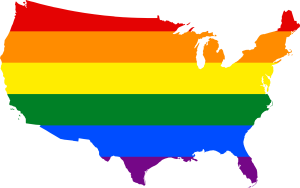Reading through this week’s assigned chapter in the Data Journalism Handbook was an interesting, at times overwhelming experience. I found myself wondering, primarily, where all the journalists that are talked about throughout the reading find the interesting data that they use to make their stories! Finding datasets about issues I have strong interest in has been difficult for me thus far. I have scoured the internet for interesting datasets related to LGBTQ issues and the results have been disheartening.
The data I have found has been quite minimal. A couple of datasets were not accessible to me because I do not have SPSS. Others are quite old. The city of Austin and the federal government both have a dearth of data related to LGBTQ issues. In my research, I came across multiple articles that spoke to this dearth and explicated the need for more data collection from LGBTQ communities. I looked for data related to cognate issues, like hate crimes and school bullying and again found very little. A few datasets could be accessed but they were region-specific to places I am not able to write about.
that spoke to this dearth and explicated the need for more data collection from LGBTQ communities. I looked for data related to cognate issues, like hate crimes and school bullying and again found very little. A few datasets could be accessed but they were region-specific to places I am not able to write about.
I have, for the time being, decided to, in light of this, stick with the library WiFi usage dataset I discussed in a previous post. It is a pretty small dataset, but it contains an interesting trend that I hope will result in an interesting story once I dig into it. My hope is that the explanations for the trend will help point me to looking at some additional data that can supplement what I already have.
As far as the presentation of the data, one simple way I will be visualizing it is in bar graphs, like the one I posted in my previous post. I plan to create a graph for each branch of the library and a composite graph charting the total usage across branches by month. To add interactivity, I think it would be cool to have an area where users can enter their address and then see the visualization of the data for the library branch that is nearest to them. The significance of this will depend on what I uncover as I seek an explanation for the spike in internet usage at libraries in the final quarter of the year.
Wondering where journalists find news-worthy data was not the only impact that reading the delivering data chapter of the handbook had on me. As I prepare to undertake this project there were a few key insights that emerged from the reading. The first is that in a data journalism project the data and the journalism need to unfold together. Focusing on one before the other is not a fruitful endeavor. You might end up laboring over data that ends up not amounting to a story, or writing a story that the data doesn’t quite support in the end. The second is that, as you work on these different aspects in tandem, you need to always keep a clear goal in mind: using the data to bring a story to life. Data visualization and interaction holds the promise of making a phenomenon or a course of action tangible to readers. It augments the written word perfectly.